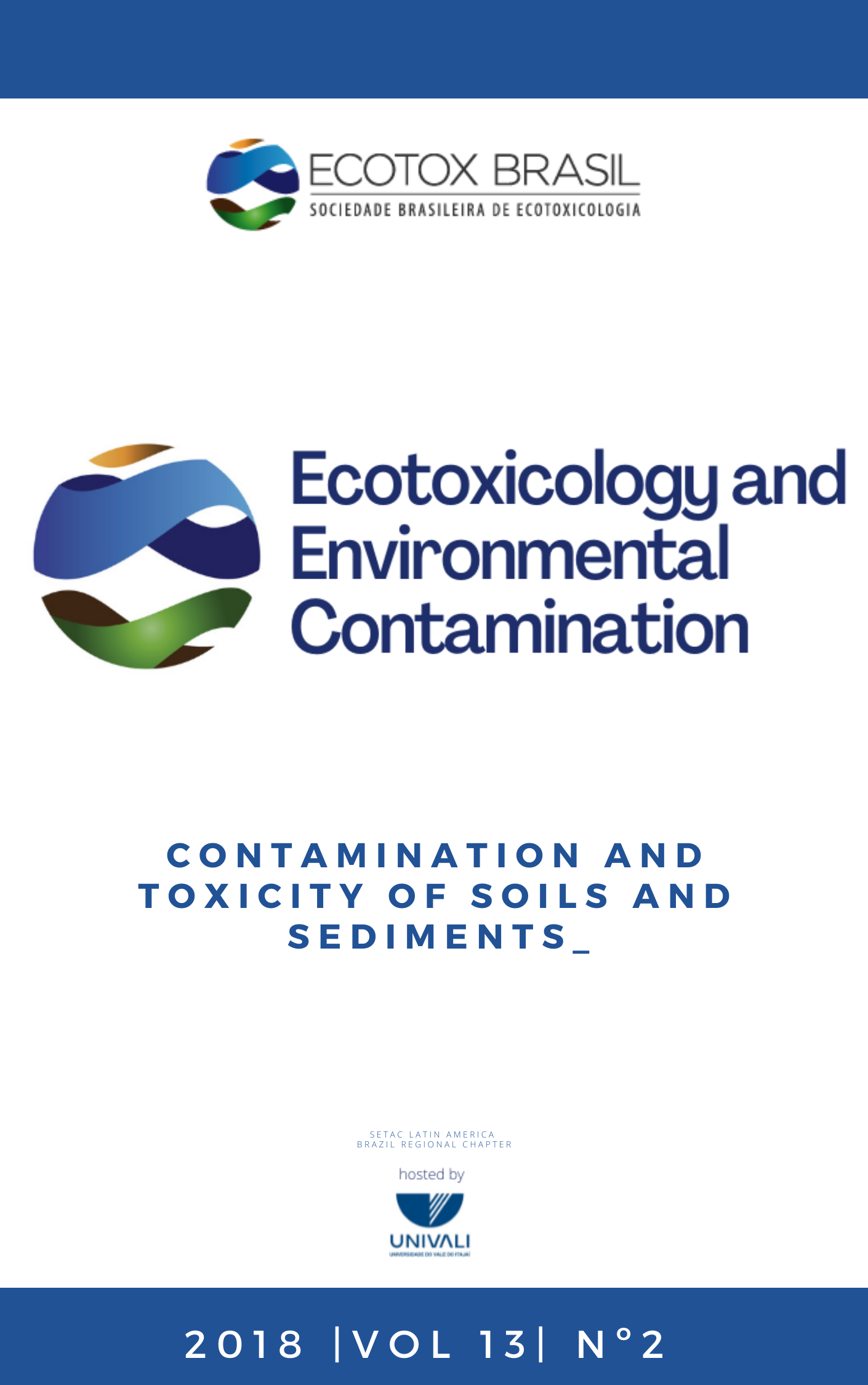A simple method for evaluation of the total concentration of Cd, Cr, Cu, Pb and Zn in sediments from the São Gonçalo channel in Pelotas, RS, Brazil
DOI:
https://doi.org/10.5132/eec.2018.02.06Abstract
This study evaluated the total concentrations of Cd, Cr, Cu, Pb and Zn in sediments samples from the São Gonçalo channel, Patos-Mirim lagoon complex, RS state, Southern Brazil during 2013 autumn, winter and spring, and 2014 summer. Ultrasound-assisted extraction method was employed to extract metals from the sediment samples. The sample powder was mixed with HNO3 and HF in an ultrasonic bath during 60 minutes at 25 oC. The limits of detection were 0.002; 0.026; 0.83; 0.386 and 0.44 mg kg-1 for Cd, Cr, Cu, Pb and Zn, respectively. The accuracy of the method was confirmed by analysis of two sediment certified reference materials and its precision was determined by the values of relative standard deviation lower than 9.1%. The concentrations obtained ranged from 0.11 to 0.58 mg kg-1 for Cd; 14.7 to 38.4 mg kg-1 for Cr; 3.9 to 102.0 mg kg-1 for Cu; 1.6 to 3.11 mg kg-1 for Pb; and 29.3 to 126 mg kg-1 for Zn. These values did not exceed the probable effect levels (PEL). Simplicity, low cost and high efficiency are some of the qualities of the method, making it adequate for routine analysis.Downloads
Downloads
Published
How to Cite
Issue
Section
License
Copyright © 2006 ECOTOX-Brasil
Copyright notice: It is a condition for publication that manuscripts submitted to this journal have not yet been published and will not be simultaneously submitted or published elsewhere. By submitting a manuscript, the authors agree that copyright for their article is transferred to the Sociedade Brasileira de Ecotoxicologia (ECOTOX-Brasil) if and when the article is accepted for publication. The copyright covers the exclusive rights to reproduce and distribute articles, including reprints, photographic reproductions or any other reproduction of a similar nature, including translations. No part of this publication may be reproduced, stored in a retrieval system or transmitted in any form or by any means, electronic, mechanical, photocopying, recording or otherwise, without permission of the publisher.
Notice: While every effort is made by the EEC, editors and editorial board to see that no inaccurate or misleading data, opinions or statements appear in this journal, they wish to make it clear that the contents of the articles and advertisements published herein are the sole responsibility of the contributors or advertisers concerned. Accordingly, the EEC, the editorial board and editors and their respective employees, officers and agents accept no responsibility or liability whatsoever for the consequences of any inaccurate or misleading data, opinion or statement.




